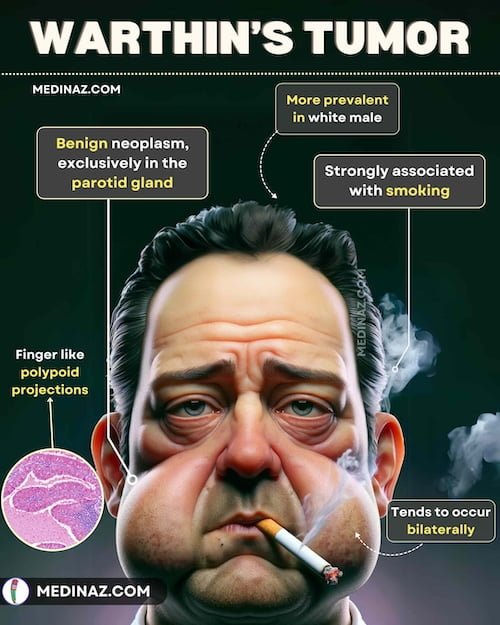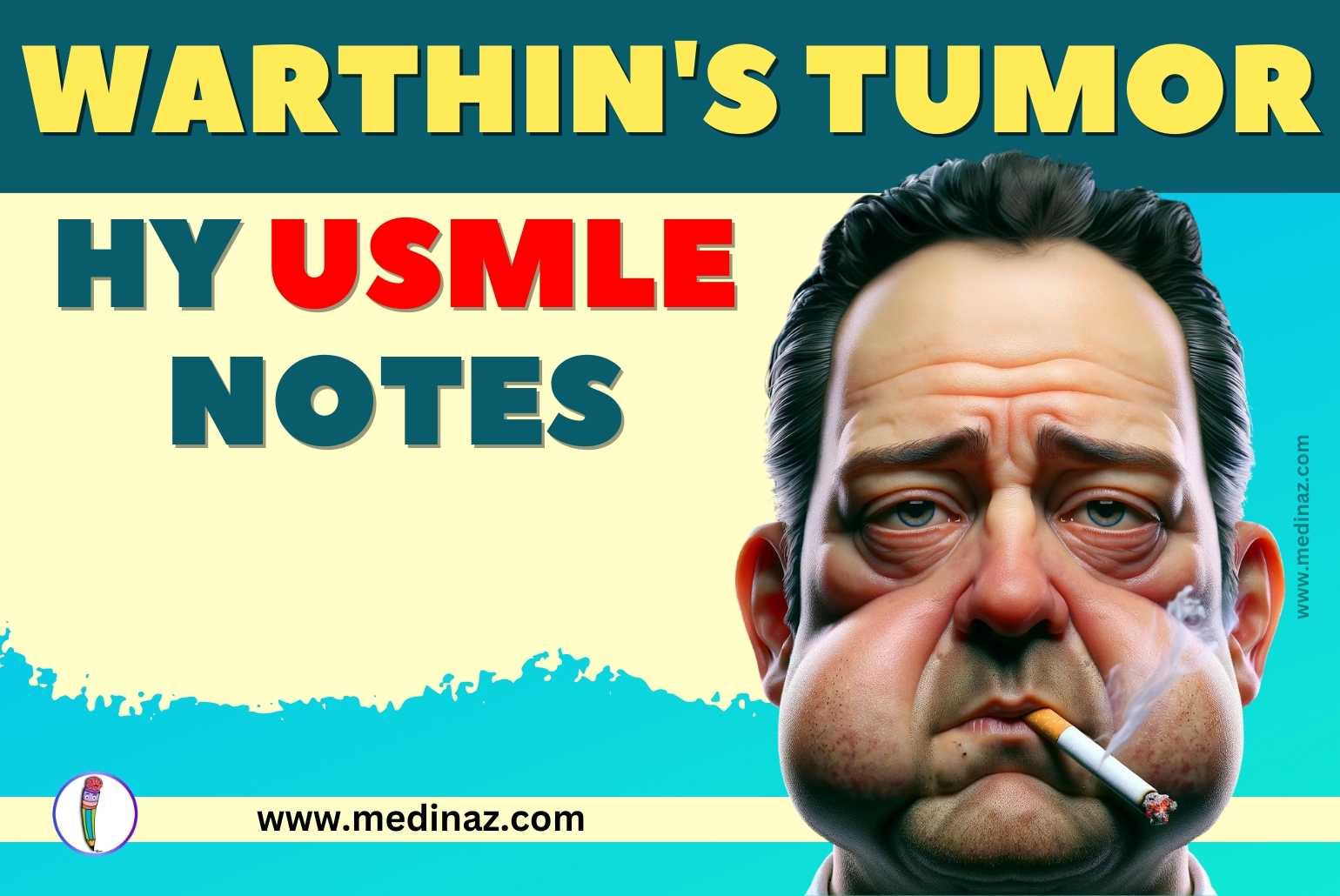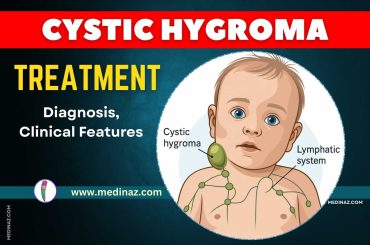Warthin’s Tumor USMLE Notes & Mnemonics contains all the high-yield points you need to know.
- Warthin’s Tumor (Papillary Cystadenoma Lymphomatosum): A benign, cystic tumor of the salivary glands, most commonly affecting the parotid gland.
Epidemiology:
- Represents 5-10% of all salivary gland tumors. (Ref)
- More common in men, typically in the 6th to 7th decades of life.
- Strong association with smoking.
Pathophysiology:
- Composed of two key elements: epithelial and lymphoid stroma.
- Believed to arise from salivary gland ducts.
Clinical Features:
- Painless, Slow-Growing Mass: Usually located in the lower pole of the parotid gland.
- Bilateral in 5-15% of cases.
- Rarely transforms into malignancy.
Diagnosis:
- Fine-Needle Aspiration (FNA) Biopsy: Diagnostic.
- Ultrasound or CT/MRI: To evaluate the extent and to differentiate from other salivary gland neoplasms.
Treatment:
- Surgical Excision: Standard treatment for symptomatic tumors or for definitive diagnosis.
- Observation: For asymptomatic, small tumors.

Mnemonic: “Warthin’s Tumor – WARTS”
- Warthy appearance (cystic, papillary)
- Adult males predominantly
- Repeated (bilateral in some cases)
- Tobacco association (strong correlation with smoking)
- Salivary gland (mainly parotid)
Chart: Warthin’s Tumor Features
| Feature | Description |
|---|---|
| Common Site | Parotid gland, typically lower pole |
| Demographics | Predominantly older males, smokers |
| Presentation | Painless, slow-growing mass |
| Pathology | Cystic, with epithelial and lymphoid components |
| Diagnosis | FNA biopsy, imaging (ultrasound, CT/MRI) |
| Treatment | Surgical excision, observation in select cases |
Note: On the USMLE, Warthin’s tumor may be presented as a classic case of a painless, slow-growing parotid mass in an older male patient with a history of smoking. Recognizing its benign nature and association with smoking is key. The choice between surgical excision and observation depends on the symptoms, size, and patient preference.
Check other important USMLE Notes
A Visual Learning Platform





